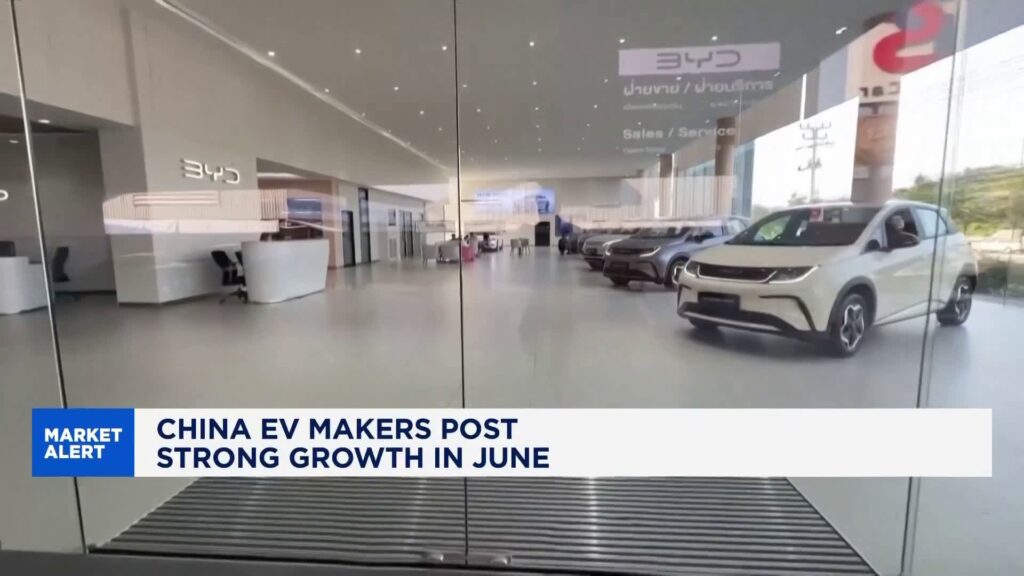
In a rapidly evolving landscape, Tesla finds itself facing intensified competition in China’s electric vehicle (EV) market. As the world’s largest automotive market, China is witnessing a surge of local and international players vying for dominance, challenging Tesla’s previously unshakable position.
This development comes as Chinese automakers, such as BYD and NIO, ramp up production and innovation, capitalizing on government incentives aimed at promoting sustainable transportation. Meanwhile, international brands like Volkswagen and BMW are also increasing their stakes, introducing new models tailored to Chinese consumers.
China’s Strategic Push in the EV Sector
China’s government has been a significant catalyst in the EV boom, implementing policies that encourage the adoption of electric vehicles. These include subsidies for manufacturers, tax breaks for consumers, and stringent emissions regulations that favor electric over traditional combustion engines. The strategic push aligns with China’s broader environmental goals, including reducing urban pollution and achieving carbon neutrality by 2060.
According to data from the China Association of Automobile Manufacturers, the country’s EV sales are projected to reach 6 million units by 2025, a substantial increase from the 1.3 million units sold in 2020. This growth trajectory underscores the market’s potential and the increasing competition Tesla faces.
Local Players Gaining Ground
Local manufacturers like BYD and NIO have been making significant strides, leveraging their understanding of the domestic market and consumer preferences. BYD, in particular, has seen a remarkable rise, with its sales figures surpassing those of Tesla in recent months. The company has invested heavily in battery technology, a critical component of electric vehicles, giving it a competitive edge.
BYD’s sales in the first half of 2023 reached 500,000 units, compared to Tesla’s 450,000 units in the same period.
Meanwhile, NIO has focused on building a premium brand image, offering unique features such as battery swapping technology, which addresses range anxiety—a common concern among EV users.
International Brands Enter the Fray
Not to be outdone, international automakers are also making significant inroads. Volkswagen, for example, has announced plans to invest over $15 billion in China’s EV sector by 2025. The German automaker has introduced a series of models under its ID series, specifically designed for the Chinese market.
BMW and Mercedes-Benz are also expanding their electric offerings, recognizing the strategic importance of establishing a strong foothold in China. These brands are focusing on luxury and performance, appealing to China’s affluent consumers who are increasingly interested in sustainable yet high-end vehicles.
Implications for Tesla and the Global Market
The intensifying competition in China poses both challenges and opportunities for Tesla. While the company has enjoyed a first-mover advantage, it must now innovate and adapt to maintain its market share. This includes expanding its product lineup, enhancing its manufacturing capabilities, and continuing to build its brand in a market that values both technology and prestige.
Elon Musk, Tesla’s CEO, has acknowledged the competitive landscape, stating that “China is the largest and most competitive market for electric vehicles. We are committed to growing our presence and continuing to innovate.”
“China is the largest and most competitive market for electric vehicles. We are committed to growing our presence and continuing to innovate.” — Elon Musk, CEO of Tesla
Looking ahead, the developments in China are likely to influence global EV trends. As manufacturers innovate to meet the demands of Chinese consumers, these advancements could set new benchmarks for the industry worldwide, driving further innovation and competition.
In conclusion, the competition heating up in China’s EV market signifies a pivotal moment for Tesla and the global automotive industry. As local and international players vie for dominance, the market dynamics will continue to evolve, shaping the future of transportation.






